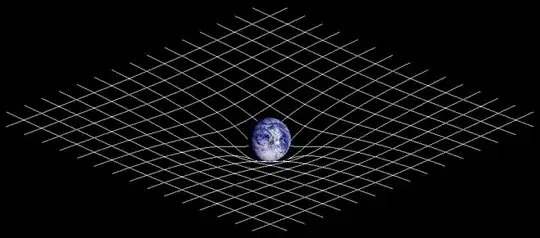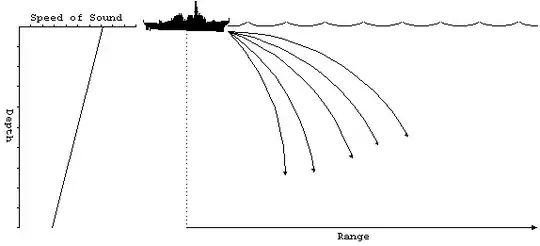In this video it explains the path of the apple in the general relativity version of gravity as being a straight line on a curved surface. Is this valid?
No. The video delivers a misunderstanding of general relativity. The apple doesn't fall down because of curvature. See Baez:
"Similarly, in general relativity gravity is not really a 'force', but just a manifestation of the curvature of spacetime. Note: not the curvature of space, but of spacetime. The distinction is crucial. If you toss a ball, it follows a parabolic path. This is far from being a geodesic in space: space is curved by the Earth's gravitational field, but it is certainly not so curved as all that!"
Curved spacetime is not curved space and curved time. It's a curvature of the "metric", and metric is to do with measurements. Let's say you placed optical clocks throughout an equatorial slice through the Earth and the surrounding space, then plotted the clock rates. You depict lower slower clock rates as lower down in a 3D image, and higher faster clock rates higher up. So your plot looks like this:
 CCASA image by Johnstone, see Wikipedia
CCASA image by Johnstone, see Wikipedia
This is the rubber-sheet picture from the Wikipedia Riemann curvature tensor page. Note that the curvature you can see in this picture relates to the tidal force while the slope relates to the force of gravity. See the tilted light-cones in this Stanford article. The more tilted they are, the steeper the slope, the stronger the force of gravity. Of course the problem with the rubber-sheet picture is that it's tautological, it uses gravity to try to explain gravity. It doesn't explain why light curves. However you can find this in the Einstein digital papers: "the curvature of light rays occurs only in spaces where the speed of light is spatially variable". So light curves like sonar:

As for why the apple falls down, remember pair production and electron diffraction and the wave nature of matter. Then simplify your apple to a single electron, then simplify that to light going round a square path. What happens to the horizontals? They bend down a little:

So the electron falls down, and it's easy to see why the deflection of light is twice the deflection of matter - only the horizontals curve. For further information see this where Einstein described a gravitational field as a place where space was "neither homogeneous nor isotropic". Also see
Inhomogeneous Vacuum: An Alternative Interpretation of Curved Spacetime. It's not unlike what Newton said in Opticks query 20:
"Doth not this aethereal medium in passing out of water, glass, crystal, and other compact and dense bodies in empty spaces, grow denser and denser by degrees, and by that means refract the rays of light not in a point, but by bending them gradually in curve lines?".
 CCASA image by Johnstone, see
CCASA image by Johnstone, see 
